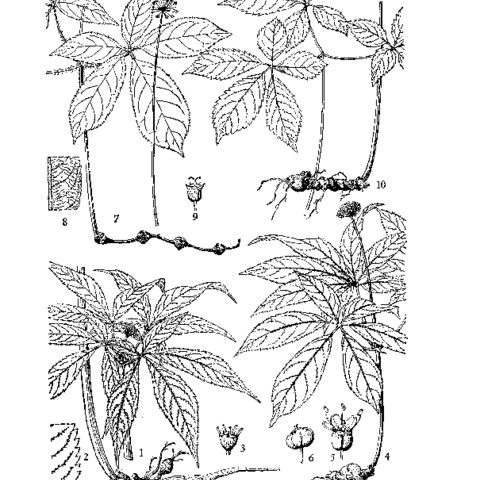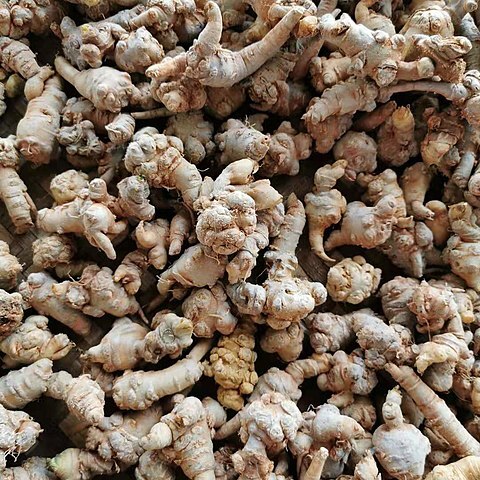Herbs, perennial, 20-60 cm tall. Rootstock fleshy, roots 1 to numerous, fusiform. Leaves 3-6, verticillate at apex of stem, palmately compound; petiole base without stipule or stipulelike appendages; leaflets obovate or obovate-oblong, 3.5-13 × 1.5-7 cm, membranous, both surfaces sparsely setose on veins, base oblique, margin biserrate, setose, apex acuminate or long acuminate. Inflorescence a solitary, terminal umbel 80-100(or more)-flowered; peduncle 7-25 cm, glabrous or sparsely pubescent; pedicels 1-2 cm, slender, slightly pubescent. Filaments ca. as long as petals. Ovary 2-carpellate; styles 2, united at least to middle, divergent in fruit. Fruit red, compressed globose-nephroid, ca. 1 cm in diam.; seeds 2, triangular-ovoid, slightly 3-ridged, thickness 5-6 mm. Fl. Jul-Aug, fr. Aug-Oct. 2n = 24.
More
A herb. It keeps growing from year to year. It grows 20-60 cm tall. The rootstock is fleshy and there can be several spindle shaped roots. There are 3-6 leaves. They are in a ring at the top of the stem. They are compound and divided like fingers on a hand. The leaflets are broadly oval and 4-13 cm long by 2-7 cm wide. There are teeth along the edge. The flowers are on stalks from a common point forming a group of 80-100 flowers. The stalk is 7-25 cm long. The fruit are red and flattened. They are 1 cm across.
Forests and shrubberies, at elevations from 2,100-4,300 metres in Central Nepal in the Himalayas.
More
It is a subtropical plant. It grows in forests between 1,200-1,800 m above sea level. In Yunnan.


